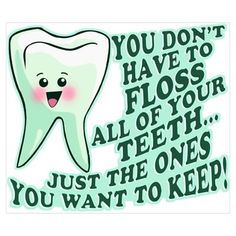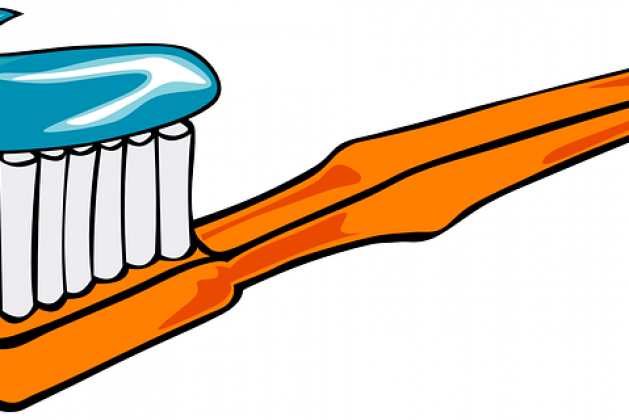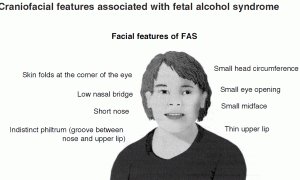
More than 90 percent of people have dental cavities. Some cavities are small and do not cause any symptoms. As the cavity grows deeper, it collects food and becomes irritated with bacteria until the tooth aches and sends the suffering patient to the dentist for treatment. The majority of cavities can be prevented with proper daily oral hygiene.
Another major problem is gum disease, either gingivitis or periodontitis. Gum disease affects nearly half of people over the age of 30 whereas two-thirds of the population over the age of 64 suffer from periodontitis. Gum disease can also be controlled with good daily oral hygiene habits.
Brush Your Teeth at Least Twice a Day
You probably learned the importance of brushing your teeth twice a day when you were a child. It is important that you remember to brush your teeth before you go to bed at night even if you are really, really tired. You should brush an extra time during the day if you eat a sweet snack.
Everything you eat creates bacteria in your mouth, which turns into plaque. If the plaque is not removed by brushing, it causes tooth decay and gum disease. There are two types of plaque that build up in your mouth: acid plaque and periodontal plaque. Brushing your teeth gets rid of the acid plaque that builds up on the enamel of the tooth.
When brushing your teeth, also brush your tongue. A coating on the tongue harbors plaque that causes bad breath. Gently brushing your tongue with your toothbrush gets rid of this coating. If brushing causes you discomfort, purchase a tongue scraper. Apply slight pressure across the surface of your tongue to remove food, bacteria and plaque that are not removed by simply brushing your teeth.
Floss Once a Day
While brushing your teeth gets rid of the acid plaque on the enamel, flossing is necessary in order to get rid of the acid plaque that builds up between the teeth. If this is not removed, it turns into periodontal plaque which causes gum diseases such as periodontal disease and gingivitis.
According to the American Dental Association (ADA), it does not matter whether you use waxed or un-waxed dental floss. Use whichever type you prefer. The important thing is to use it daily. Although it does not matter a whole lot whether your brush or floss first, the ADA says that flossing first gives brushing a greater opportunity to brush away the plaque that was dislodged by the flossing.
A strand of floss should not be reused. The bacteria removed from between the teeth will stay on the floss and if it is reused, it will simply return the plaque to the teeth. The ADA has prepared a set of drawings demonstrating the proper way to use dental floss.

Replace Your Toothbrush Often and Don’t Store it Near the Toilet
Replace your toothbrush at least every three months and more often if the bristles become frayed or worn down. Rinse it thoroughly and store standing up without a cover on it so it can dry out between uses.
Many people store their toothbrushes in a holder for the family toothbrushes, which is often left out on the bathroom deck. First, toothbrushes from different people should not be stored together. Toothbrushes contain bacteria that were removed from the mouth and teeth. You do not want your toothbrush to get bacteria from touching another person’s toothbrush.
Second, every time a toilet is flushed with the lid up, it sprays bacteria into the air. If your toothbrush is sitting in a container on the bathroom deck near a flushing toilet, the brush will pick up bacteria from the unseen bacteria spray from the toilet flush.
Chew Gum
Believe it or not, chewing gum can be a good thing as long as it is sugarless gum. Chewing sugarless gum after a meal can dislodge food stuck between the teeth. It also stimulates the production of saliva which helps neutralize the damaging effects of the acid plaque. Avoid sucking on an after-dinner mint which has sugar that promotes bacterial growth.
Practice Daily Healthy Dietary Habits
When you put a fork full of food in your mouth, the digestive process begins. Bacteria in your mouth particularly enjoy converting any sugar you eat into the acids that are harmful to your teeth. Foods that have a high sugar content should be avoided whether it is a natural sugar or a sugar that was added in processing. Also avoid chewy foods that can stick to your teeth.
Foods high in calcium and phosphorous, such as nuts and dairy products, are thought to protect your teeth from the damaging acids. Foods with a high water content, such as fruits and vegetables, wash away food particles and dilute the acids.
Other Helpful Daily Habits for Cultivating Healthy Teeth and Gums
1) Stop smoking. In addition to staining the teeth, smoking also damages gum tissue.
2) Use fluoridated toothpaste.
3) If you are unable to brush after eating, swish your mouth with water or use an antibacterial mouthwash.
4) If your mouth is dry, drink more water. Saliva is needed to get rid of plaque.
5) Visit your dentist regularly for evaluations and professional teeth cleaning.
Action time! What’s one step you can take within the next 24 hours to take care of your teeth and gums?




Leave a comment
You must login or register to add a new comment.